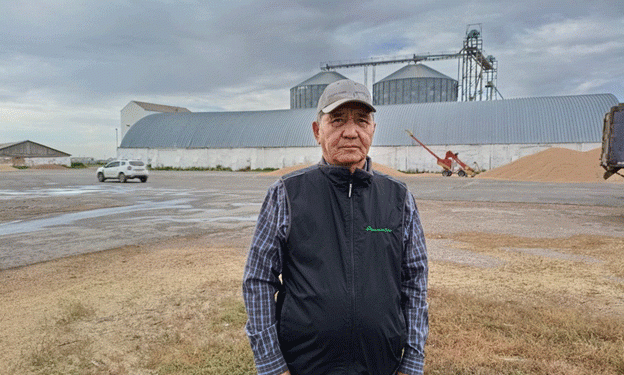Kazakhstan’s wheat harvest in the Aastrakhan district is anticipated to stretch into mid-October due to a combination of wet weather, late planting, and cool summer temperatures. While these conditions have contributed to a higher overall yield, they have also raised concerns about grain quality and potential losses as autumn weather approaches. Local farmer Ryskali Saduakas from “Oksanovka-1” sheds light on these challenges and the strategies employed to mitigate risks.
Weather Impact on Wheat Quality and Harvest Timeline
The wet weather of the current agricultural season has been unprecedented, providing an ideal environment for wheat growth. However, the late seeding and cooler summer temperatures have led to concerns about grain quality, with a risk of falling below acceptable standards due to impending fall storms. Farmers are racing against time to complete harvesting before the onset of colder weather.
In Aastrakhan district, a historically dry area of the Akmola region, conditions have been particularly harsh, with reports of entire growing seasons without productive rainfall. This year, however, farmers like Saduakas have benefited from record rainfall, allowing wheat yields to average around 30 quintals per hectare—double the typical yield for the region, despite the lower quality of the grain, which qualifies as a third-class product.
Innovative Agronomic Practices
To adapt to the challenging climatic conditions, farmers at “Oksanovka-1” have made significant shifts in their agricultural practices:
- Adoption of Short-Stemmed Wheat Varieties:
The farm has transitioned to short-stemmed wheat varieties such as “Likamero,” “Kornetto,” “Toccata,” and “Kaliksо” from the Russian company “EkoNiva-Semena.” These varieties require fewer resources to grow and produce heavier spikes, contributing to higher yields. - Enhanced Nutrient Management:
Recognizing that the selected wheat varieties respond well to fertilizers, the farm implemented a nutrient management strategy that included the application of 80 kg of sulfur-containing ammonium phosphate per hectare. While liquid fertilizers have not yet been utilized, Saduakas plans to incorporate them, expecting them to outperform granular options. - Diversification of Crops:
In addition to wheat, “Oksanovka-1” has diversified its planting to include 11,000 hectares of various crops, with significant areas allocated for sunflower and oats to support livestock feed. This crop diversification helps mitigate risks associated with single-crop dependency. - Efficient Harvesting Operations:
Currently, the farm employs ten Claas combines for wheat harvesting, transporting grain to storage facilities for initial processing before transferring it to an elevator. Despite challenges posed by ongoing rains, the farm aims to complete the harvest by October 10.
The wheat harvest in Kazakhstan’s Aastrakhan district exemplifies the resilience of farmers who are adapting to changing climatic conditions and emerging agricultural challenges. While wet weather has led to higher yields, the quality of the grain remains a concern. By implementing innovative agronomic practices, farmers are not only improving yields but also laying the groundwork for sustainable agriculture in a region marked by climatic unpredictability. As the harvest continues, the lessons learned this season will undoubtedly influence future farming strategies.
Error




